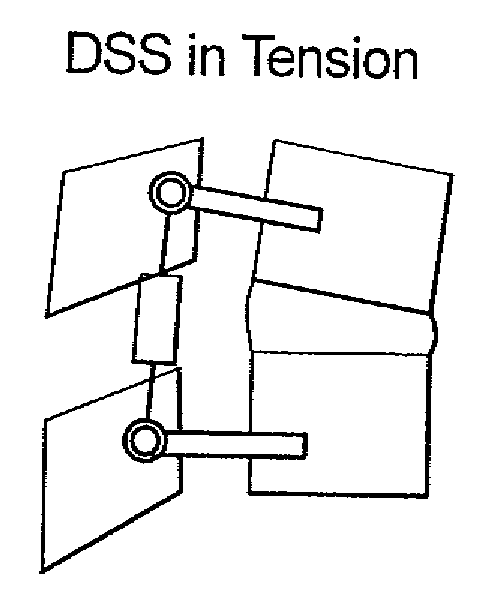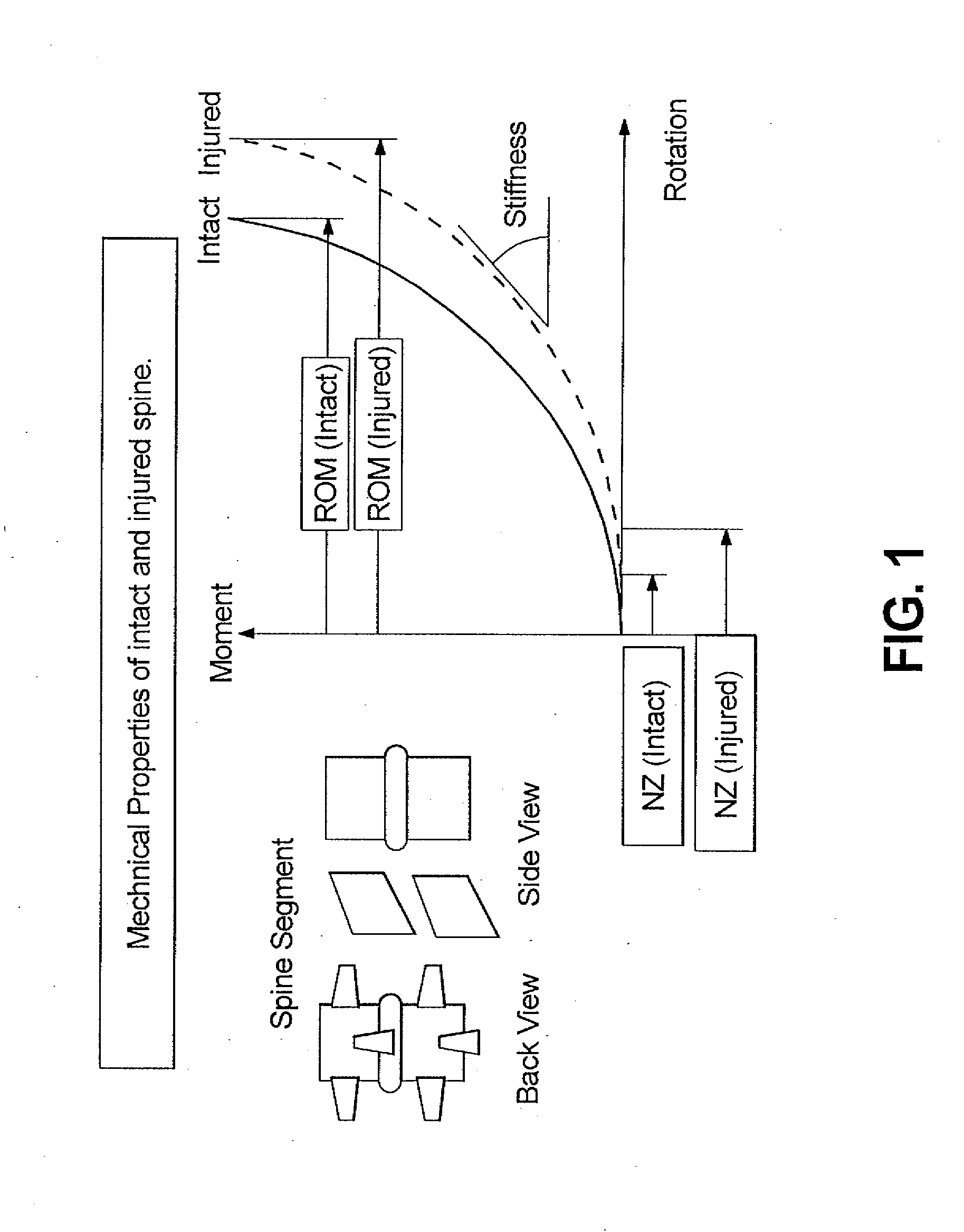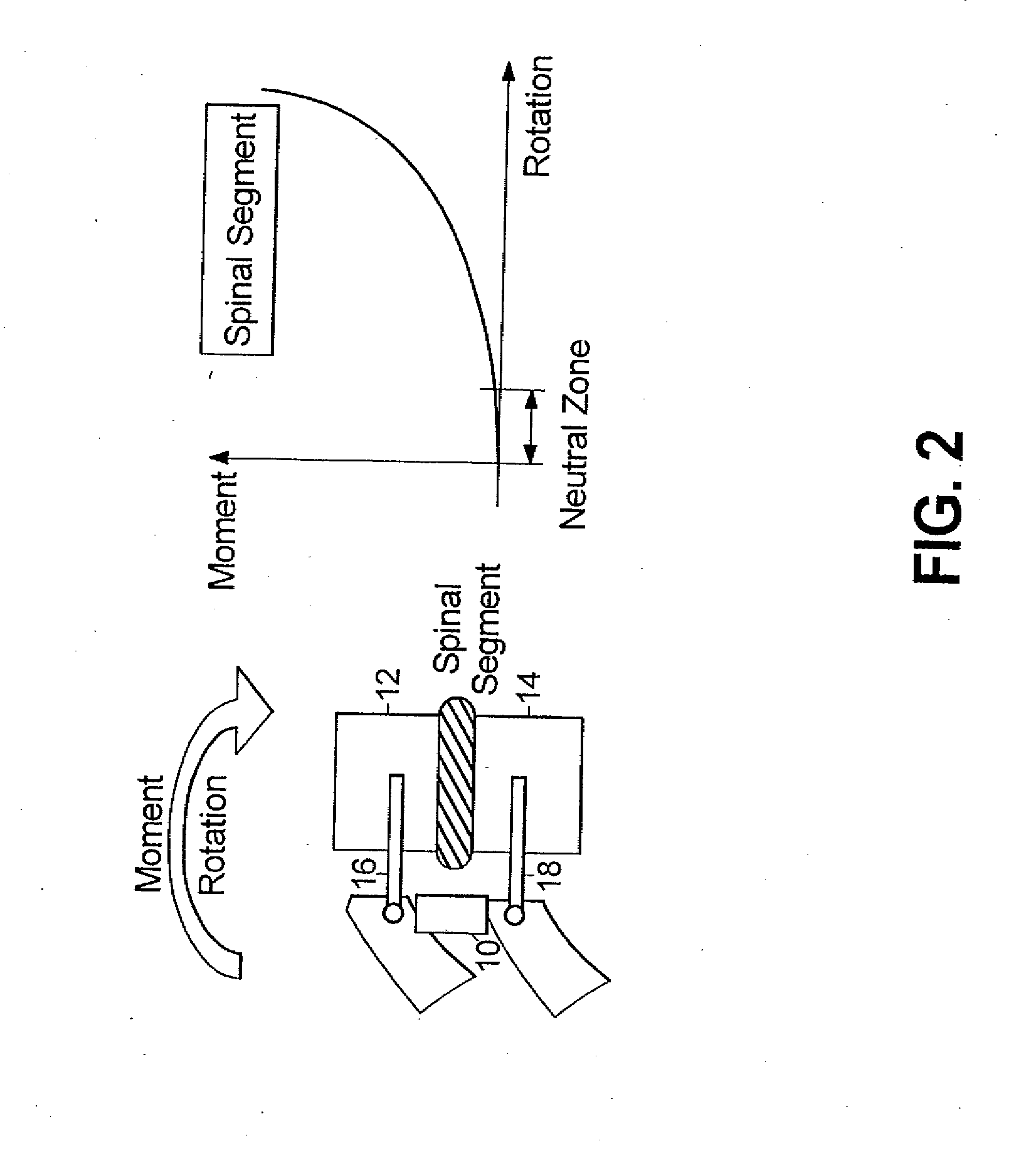Method for stabilizing a spinal segment
a spinal segment and stabilization technology, applied in the field of advantages, can solve the problems of accelerating degeneration at those levels, reducing range of motion, and affecting the clinical effect of patients, and achieves superior clinical effects, convenient installation, and flexibility/flexibility in application.
- Summary
- Abstract
- Description
- Claims
- Application Information
AI Technical Summary
Benefits of technology
Problems solved by technology
Method used
Image
Examples
Embodiment Construction
[0060]The present disclosure provides advantageous devices, systems and methods for spinal stabilization and / or alternative surgical implant applications. More particularly, the present disclosure provides devices, systems and methods that deliver dynamic stabilization to the spine so as to provide clinically efficacious results. The exemplary embodiments disclosed herein are illustrative of the advantageous spine stabilization systems and surgical implants of the present disclosure, and methods / techniques for implementation thereof. It should be understood, however, that the disclosed embodiments are merely exemplary of the present invention, which may be embodied in various forms. Therefore, the details disclosed herein with reference to exemplary dynamic spinal stabilization systems and associated methods / techniques are not to be interpreted as limiting, but merely as the basis for teaching one skilled in the art how to make and / or use the advantageous dynamic spinal stabilizatio...
PUM
 Login to View More
Login to View More Abstract
Description
Claims
Application Information
 Login to View More
Login to View More - R&D
- Intellectual Property
- Life Sciences
- Materials
- Tech Scout
- Unparalleled Data Quality
- Higher Quality Content
- 60% Fewer Hallucinations
Browse by: Latest US Patents, China's latest patents, Technical Efficacy Thesaurus, Application Domain, Technology Topic, Popular Technical Reports.
© 2025 PatSnap. All rights reserved.Legal|Privacy policy|Modern Slavery Act Transparency Statement|Sitemap|About US| Contact US: help@patsnap.com



